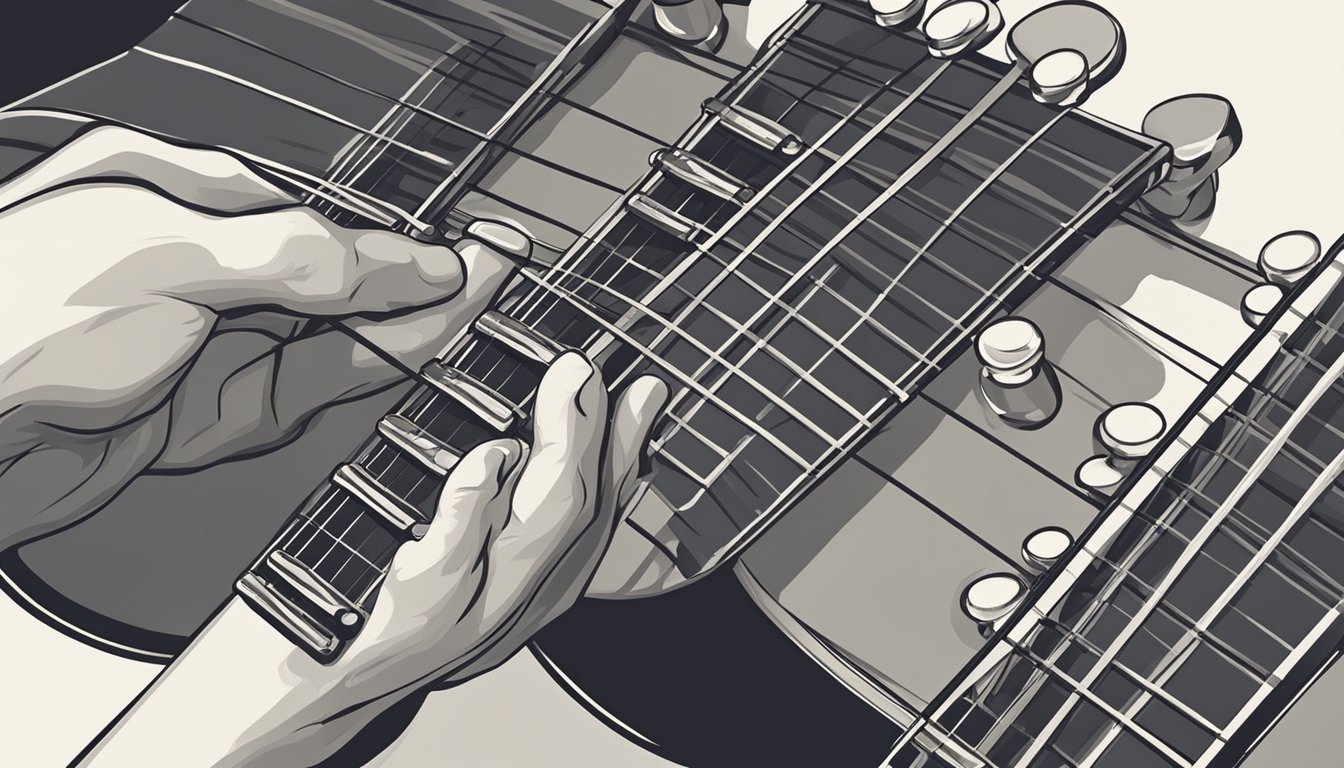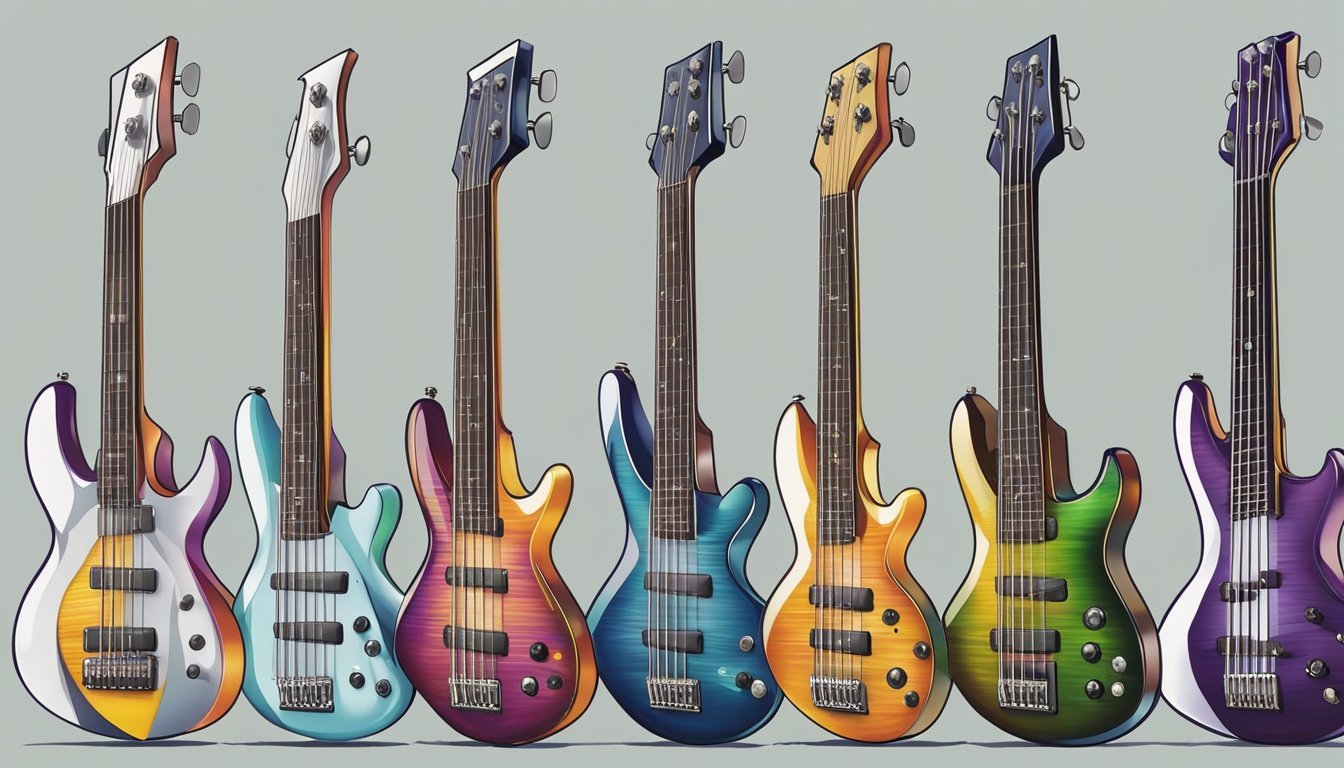When you pick up a guitar, knowing which strings are which can really help you get started.
The lowest to highest notes are E, A, D, G, B, and E on a standard guitar.
This understanding makes it easier to play chords, scales, and songs.
Knowing this simple fact lays the foundation for your guitar journey.

Many beginner guitarists feel overwhelmed by strings and tuning, but it’s straightforward once you break it down.
Each string has a unique name and purpose, which contributes to the richness of the music you create.
Plus, remembering these names helps you communicate better with other musicians and learn faster.
As you read on, you’ll discover tips and tricks to memorize the string names and their order with ease.
Whether you’re just starting or brushing up on your skills, this knowledge is key to unlocking your potential as a guitarist.
Key Takeaways
- The strings on a guitar are tuned to E, A, D, G, B, and E.
- Understanding string types helps you choose the right ones for your style.
- Familiarity with string names improves your playing and communication.
Anatomy of a Guitar
When diving into the anatomy of a guitar, it’s essential to know about the strings and the fretboard.
Each part plays a vital role in how you play and sound.
Meet the Strings
Your guitar typically has six strings.
These strings are made of different materials based on the type of guitar.
- Acoustic guitar strings are usually bronze or phosphor bronze, delivering a bright tone.
- Electric guitar strings can be nickel-plated or pure nickel, giving you that classic electric sound.
- Bass guitar strings are thicker and may be made from roundwound or flatwound materials for various tonal qualities.
Here’s how they are usually named from the thickest to the thinnest:
- Low E (6th string)
- A (5th string)
- D (4th string)
- G (3rd string)
- B (2nd string)
- High E (1st string)
Knowing the names helps you tune and play chords more easily.
Fretboard and Fingerboard Basics
The fretboard, or fingerboard, is the part of the guitar where you press the strings to create notes.
It is found on the neck of both acoustic and electric guitars.
Fretboards have metal strips called frets.
These frets divide the neck into sections, allowing you to play different notes.
Depending on the guitar, you might have 19 to 24 frets.
Your fingers should feel comfortable as you move along the fretboard.
Proper finger positioning makes it easier to play chords and scales.
Guitar Strings and Tuning
Understanding how guitar strings are tuned is key for every player.
Most guitars use a standard tuning system, but there are also some popular alternative tunings that can enhance your playing experience.
Standard Tuning Explained
The standard tuning for a six-string guitar is E A D G B E.
This means you start with the thickest string, known as the low E string, and move to the thinnest one, which is the high E string.
Here’s a quick breakdown:
| String Number | Note |
|---|---|
| 6 (thickest) | E |
| 5 | A |
| 4 | D |
| 3 | G |
| 2 | B |
| 1 (thinnest) | E |
This arrangement allows you to play a wide range of chords and notes efficiently.
When tuning, you can use a tuner or reference notes from other strings, such as pressing the fifth fret on the A string to tune the D string.
A Look at Alternate Tunings
Alternate tunings can give your guitar playing a fresh sound.
One popular option is Drop D tuning.
This one lowers the low E string down to D, making it easy to play power chords.
Another great option is DADGAD tuning, which creates a rich, open sound.
In DADGAD, the strings are tuned to D, A, D, G, A, D, giving you a unique soundscape for fingerstyle playing or songwriting.
These alternate tunings can inspire your creativity and allow you to explore new musical ideas.
Don’t hesitate to experiment with different tunings to find what suits your style best!
String Types and Selection
Choosing the right guitar strings can greatly affect your playing experience and sound.
Different materials and gauges contribute to various tones, so it’s essential to understand what suits your style.
Materials and Sound
Guitar strings come in various materials, and each affects the sound differently.
Here’s a brief rundown:
- Steel Strings: Common for electric and acoustic guitars, they offer a bright and powerful tone.
- Nylon Strings: Mostly used for classical guitars, they provide a softer and warmer sound.
- Bronze Strings: Popular for acoustic guitars, these strings can produce clearer tones but may tarnish quickly.
- Phosphor Bronze: A bit more durable than brass, these provide a warmer sound and resist corrosion.
- Nickel-Plated Steel: Often used for electric guitars, they balance warmth and brightness, making them a versatile choice.
Selecting a string material depends on the sound you desire and the type of guitar you play.
Understanding String Gauges
String gauge refers to the thickness of the strings and is measured in inches or millimeters.
Lighter gauges are easier to play, but heavier gauges can provide a fuller sound.
Consider these common gauges:
- Light Gauge Strings (e.g., 0.010 – 0.046): Easier on your fingers, great for beginners. They bend smoothly for solos.
- Medium Gauge Strings (e.g., 0.011 – 0.052): A good balance of playability and tone. Suitable for most players.
- Heavy Gauge Strings (e.g., 0.013 – 0.056): These create a rich tone but require more finger strength. Ideal for down-tuning.
When selecting a gauge, think about your playing style and comfort.
A heavier gauge might be necessary for deep tones, while lighter strings are better for quick finger work.
Playing Techniques

Playing techniques are essential for getting the most from your guitar and creating interesting sounds.
Whether you’re using open strings or working through chord progressions, mastering these skills can improve your playing style and tone.
Mastering Open Strings
Open strings are the foundation of many guitar techniques.
These are the strings you play without pressing down, allowing them to ring freely.
To identify open strings, remember their names from the thickest to the thinnest: E, A, D, G, B, e. These notes can be used in various chords and melodies.
When playing open strings, pay attention to string tension, as it affects the tone.
You can use a guitar tuner to ensure your strings are in tune, which will impact your sound quality.
Practicing techniques like hammer-ons and pull-offs with open strings can help create smooth transitions and add flair to your playing.
Experiment with how the pickups on your guitar pick up the sound from these open strings to find the tone you like best.
Chord Progressions and Strumming
Chord progressions are sequences of chords played in a smooth and rhythmic manner.
Start with basic chords like G, C, D, and E minor.
When strumming, focus on keeping a steady rhythm.
Use your wrist for fluid motion and let your arm support your movements.
Aim to avoid accidentally muting strings while strumming.
A good way to practice is by playing common progressions repeatedly.
This builds muscle memory and helps you switch chords with ease.
Remember to adjust your grip on the strings to maintain a clean sound.
Incorporating open strings into your chord progressions can enhance your tone.
By mixing different strumming patterns, you can add dynamics and keep your playing interesting.
Frequently Asked Questions
Understanding guitar strings can make a big difference in your playing.
Here are some common questions about guitar strings to help you get started.
Different guitar string types explained can guide you in choosing the right ones for your instrument and playing style.
Whether you prefer the warmth of nylon strings or the brightness of steel strings, knowing their characteristics will enhance your musical expression and overall experience.
Don’t hesitate to experiment with various options to find what suits you best!
What’s the order of guitar strings from thinnest to thickest?
The standard order of guitar strings from thinnest to thickest is E, B, G, D, A, and E. This means the first string is the highest pitch (high E) and the sixth string is the lowest pitch (low E).
How do I remember each guitar string’s name?
A popular way to remember the string names is by using a phrase.
Many people use “Every Acid Dog Gets Better Eventually.” Each word’s first letter corresponds to the string names from the lowest to highest pitch.
What’s the correct way to number guitar strings?
You number the strings starting from the highest pitch (your first string) to the lowest pitch (your sixth string).
So, the high E string is number 1, and the low E string is number 6.
On a guitar, which string is considered the ‘top’ string?
The ‘top’ string on a guitar usually refers to the first string, which is the high E string.
It’s at the top when you hold the guitar in playing position.
What are some tips for beginners to identify guitar strings?
To identify guitar strings easily, pluck each one and listen to the sound.
You can also use stickers on your fretboard to label the strings until you memorize their names.
How do I figure out what each string is when looking at guitar chords?
When looking at guitar chords, focus on the diagram that shows string names or numbers.
Most chord charts label the strings, helping you know which one is which as you learn new chords.

